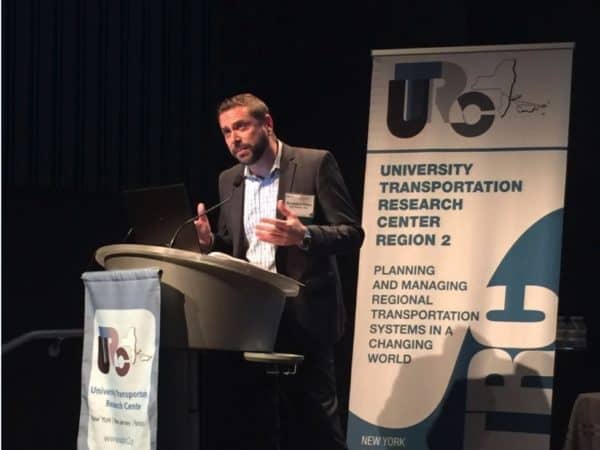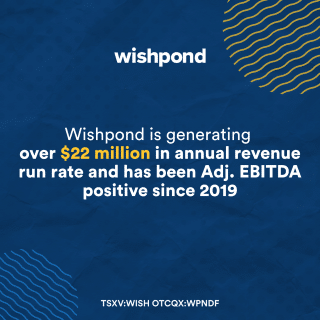

When we first caught up with GreenPower Motor Company (Greenpower Motor Stock Quote, Chart, News: TSXV:GPV) two years ago the fledgling electric bus maker was facing down a lot of unknowns.
Could a small company from Vancouver with just one product compete on the international cleantech stage? Could it attract the kind of talent and capital necessary to stay in the game? Would policy around cleaner vehicles provide a tailwind or a headwind for the company and its electric buses?
Today, these questions have been answered definitively. GreenPower Motor has expanded its offering to a complete line of electric transit buses, made important sales into the U.S. market, and convinced a key industry expert to get on board.
Cantech Letter sat down with Executive Chairman Fraser Atkinson and new president Brendan Riley to talk about what’s next for the company.
Hi Fraser welcome back and nice to meet you Brendan. It’s been two years since we last talked Fraser and first let me congratulate you on a successful run. The company’s share price is up 260% and by all accounts the company is doing well – please give our readers a brief overview of the past 24 months.
Thanks Nick. It has been a very positive time for GreenPower and our shareholders. When we first sat down we had one product –the EV350 40 foot transit bus. We now have a complete line of battery electric transit buses including a double-decker bus– all of these buses are based on a low floor clean sheet design. We currently have two EV350s in operation: one as a demonstration vehicle and the other is with the Altoona Bus Research and Testing Center in Pennsylvania undergoing mandatory FTA evaluation. Last year, our first double-decker bus was deployed into service with the Greater Victoria Harbour Authority and we have another in final assembly for our partner EV Power Corp. We also initiated a high floor product line which includes school buses and shuttle buses. Our first two school buses are scheduled to be deployed shortly.
What do you think has led to these recent successes?
I think the key part of our success over the past 24 months has been based on developing a suite of products that address the various sectors serviced by buses, which combined with a very talented team, has allowed us to quickly adapt to sales and market opportunities as the EV marketplace continues to evolve. Another key milestone was the acquisition of our 9.3 acre property in Porterville, California for the construction of a 150,000 square foot manufacturing facility for our all-electric buses. We will continue to utilize our manufacturing partners overseas until the factory is completed; and, with any uptick in projected demand we will continue to service specific markets and products from our offshore facility. However, California is leading the way in clean air policy and it just makes intuitive sense to build a product in a place that needs the product. The San Joaquin Valley has some of America’s worst air quality, at times falling short to meet federal health standards for both smog and particulate pollution. We are very mindful of the expression, “you must learn how to walk before you can run”. Our management team and board of directors has demonstrated excellent vision combined with an appropriate level of patience. A few months ago we added Brendan to the GreenPower team as our new president – his skillset and experience is very complimentary to the group. I believe we are well positioned to take advantage of some major opportunities in 2017.
When I was approached to serve as the company’s president I did my due diligence and was absolutely amazed at the depth of their product line and the quality of their build
Brendan, as the new kid on the bus, tell us about your background and what it was that attracted you to GreenPower Motor?
I was serving as a board member for an OEM bus manufacturer before I was approached by BYD to set up their North American operations in 2012. I was employee number one in North America and managed all developments in association with the head office in China. I located and bought the U.S. factories in Lancaster, set up bus production and hired the team. I was responsible for a number of significant contract wins including Denver (36 buses), L.A. Metro (25 buses) and Long Beach (10 buses). My role expanded to set up the BYD Battery electric truck team and later the battery electric material handling division. When I left BYD a few months ago the head count was approaching 400 employees across 8 states.
Had you been exposed to GreenPower Motor?
I was aware of GreenPower and, in general terms, their developments over the past few years. I had previously met the management team at a trade show and I remember being very impressed with their initial product –the EV350. When I was approached to serve as the company’s president I did my due diligence and was absolutely amazed at the depth of their product line and the quality of their build. The double-decker bus (the first of its kind in North America) is a game changer in the EV transit marketplace. The cost per seat is much lower than any other EV transit bus, the ride is superior and the cost is almost on par with traditional diesel double-decker buses. Overall, the double-decker offers the lowest total cost of ownership per seat of any transit bus in North America.
From a design and build perspective I believe that GreenPower has the right formula. The clean sheet design is easy to modify and cheaper to buildout than the competition. The best of breed strategy for parts, batteries and components is the way to go – why not offer your customers the best product? This strategy has leveraged two completely new market opportunities for the company in 2017 by developing a cost effective high floor model for the school bus and shuttle bus marketplace with essentially no additional overhead requirements. Without these features it is impossible to launch multiple products into multiple market segments on a financially prudent basis. Finally, and perhaps most importantly, I was very impressed with the management team. GreenPower’s CEO Philip Oldridge can only be described as a bus guru. His ability to design and build the best buses in the industry is beyond impressive. The board and management team are very sensible people with a deep understanding of the industry and the requirements to achieve long term success.
Two years ago the EV bus market was in the early phase of adoption. A few people were saying that electric buses were the product of the future but it looks like the market is moving much quicker than initially expected. How do you see things Brendan?
It’s now well established that zero emission electric buses represent the lowest total cost of ownership and provide the least negative impact on the environment – particularly for regions that use hydroelectric or renewable power. We see RFP documents for transit agencies all across North America and EV buses are no longer being looked at as “trial” products they are now, in most cases, part of the RFP. Based on all the information out there and the demand for electric buses in 2017 and beyond it will be very difficult for the four major manufactures (BYD, Proterra, New Flyer and GreenPower) to meet the demand. From a business perspective it is the perfect place to be.
GreenPower’s all-electric buses are eligible for funding from the $2.9 billion Volkswagen Settlement Mitigation Trust. For non-government entities, the funding from the VW Mitigation Trust can be up to 75% of the cost of a new all-electric bus, including the charging infrastructure; while for government entities, the funding can be up to 100%
It looks like there may be some serious tailwinds out there in the form of buyer incentives and subsidies. Is this helping to drive EV bus adoption as well?
Fraser: Absolutely. Last year, instead of focusing on one-off demonstration sales, we decided to sync our business development plans with these drivers and the results of that decision are starting to pay off. In December, the California Air Resources Board awarded $9.5 million to the City of Porterville to deploy 10 GreenPower EV350 transit buses on all nine Porterville Transit routes, and to install the charging infrastructure including 11 charging stations. This award offsets the majority of the purchase. There are other significant buyer incentives offered in California through California Climate Investments and their HVIP voucher program. These vouchers reduce the purchase price of a bus from 10% to 25%. In this industry, a 25% reduction in price is a major incentive. And most recently, GreenPower’s all-electric buses are eligible for funding from the $2.9 billion Volkswagen Settlement Mitigation Trust. For non-government entities, the funding from the VW Mitigation Trust can be up to 75% of the cost of a new all-electric bus, including the charging infrastructure; while for government entities, the funding can be up to 100%. This is a significant development in the industry and it has definitely expanded our sales pipeline.
BYD is expanding operations in North America and Proterra is getting a lot of press these days. Proterra recently announced a large contract win (73 buses) from Seattle’s King County Metro Transit agency and they announced another large VC funding of $140 million. Can you compete with these more established players?
Brendan: I think I’m probably best suited to answer this question. My personal policy is not to speak negatively about our competition; and in the case of BYD my previous employer. However, I will point out that under a previous agreement King County had an option to purchase up to 200 buses from Proterra so this is not a new development in the marketplace. What I can say is this is a market serviced by dirty products that needs to be electrified. Buses, trucks and taxis account for 10% of the vehicles on the road today but they result in 66% of the emissions. Buses are utilitarian products that serve the needs of everyman. There are many people entrenched in this industry – drivers, mechanics, and procurement officers to name a few. There are also many regulations, certifications and product requirements that are specific to the North American marketplace. The company that will succeed will be the company that understands these limiting factors and operates within the required parameters of the marketplace. GreenPower’s clean-sheet design, best of breed standardized OEM product strategy (including our technology platform) and our focus on cost control will result in a financially stable business that will excel in the long run. I believe GreenPower is perfectly positioned to take advantage of this rapidly expanding marketplace – and yes, we certainly can compete with the likes of BYD and Proterra.
Disclosure: GreenPower Motor is an annual sponsor of Cantech Letter
Leave a Reply
You must be logged in to post a comment.



 Share
Share Tweet
Tweet Share
Share




Comment